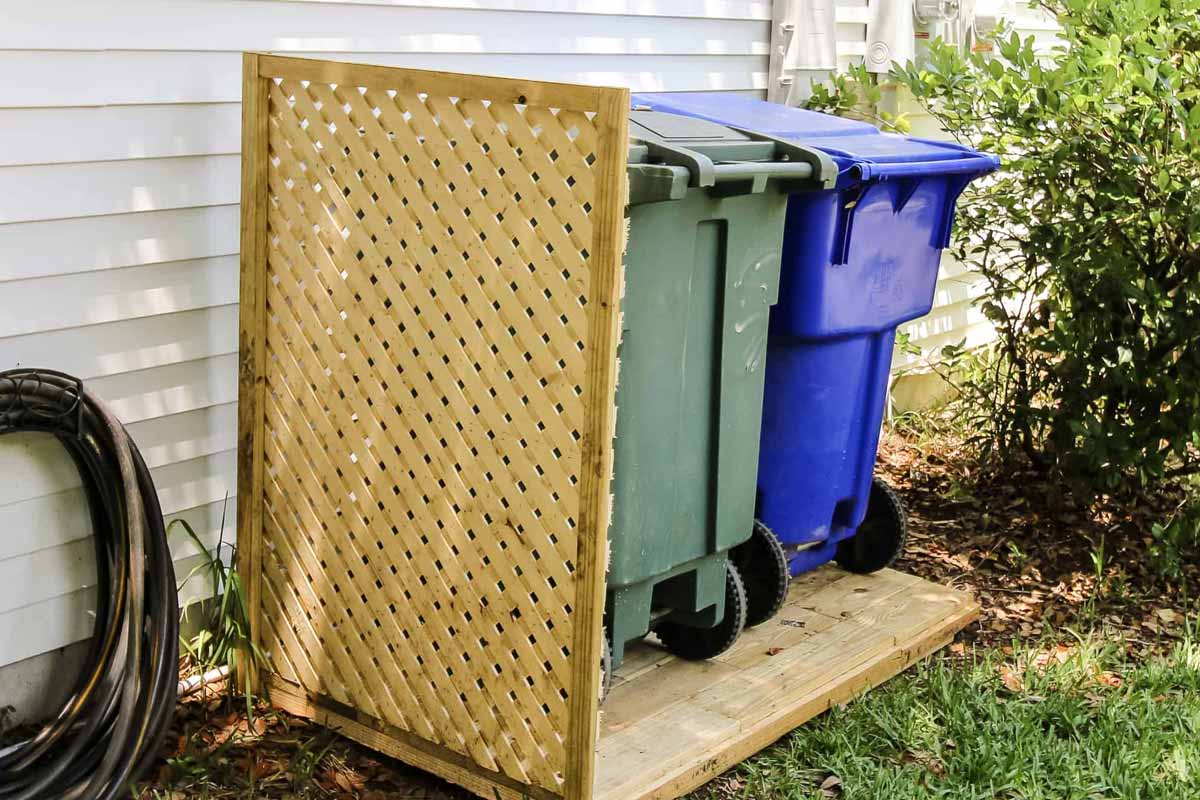That hulking bin by the siding steals attention and flattens curb charm. A compact enclosure restores calm lines, and it does it with simple tools and weekend effort. You hide the smell and the clutter while keeping pickup access fast. Built well, it looks intentional, not improvised, and it tucks Trash out of sight without fuss.
Why a corral gives bins order and curb charm
A small enclosure changes how the side yard reads, because it adds shape, rhythm, and shade. Panels break the blocky silhouette of the cans, and the posts echo porch details. You gain a neat nook that signals care, while the walkway stays clear and safe for weekly rolling.
Hidden cans also help with odor control, since airflow around slats reduces lingering whiffs. Pests have fewer easy targets, and the lids stay untouched. Access remains simple, as the opening faces the path. Neighbors see clean lines, and you see less mess, so both sides win.
Off-the-shelf corrals exist in many sizes and shapes, yet a tailored build fits your exact bins and space. You align height with your fence, or you mirror trim on the house. The result blends in, and it feels permanent. The look improves curb appeal because it reads as designed.
Tools and steps to build a neat Trash corral
Gather four 4×4 wooden posts in 6- or 8-foot lengths, lattice fencing with caps, cement mix, a post hole digger, a drill, and exterior screws. Choose cedar for rot resistance, or use treated wood. You may also add vinyl or slat panels, plus stain or exterior paint for finish.
Mark the layout on level ground, and check that the posts will stand taller than your bin. Dig holes about 36 inches deep and 9 to 12 inches wide. Mix cement, set each post with a stabilizer while it cures, and confirm plumb. Space the posts so panels meet cleanly, without gaps.
After the posts set, screw on fencing, then add lattice caps for a crisp edge. Slip on post sleeves and caps to shield end grain, although they are not fully waterproof. Finish with stain or paint so the enclosure matches trim. A paved pad or concrete helps rolling and resists mud.
Practical checks, materials, and longevity tips
Before digging, call to locate underground utilities, and avoid damage while you plan. Some neighborhoods require approval, so renters and HOA residents should request permission early. A quick note also prevents disputes about placement. The pathway stays clear, and Trash remains accessible, because the opening faces the street and the weekly route.
Cedar resists rot well, and treated lumber adds durability where soil meets wood. Cap every post to block water wicking, and seal cut ends after drilling. Hardware should be exterior-rated so screws don’t streak stains. A yearly rinse keeps grime off lattice, and a light top-coat keeps color even.
Ground contact shortens life, however smart details help. Set posts in concrete that crowns slightly so water sheds. Keep panels an inch above grade to reduce splash. Provide airflow through slats to curb odor, and leave enough clearance for lids to open. Small habits extend service and keep upkeep low.
Cost, durability, and style choices for a Trash shelter
Prebuilt corrals start near an average of about $300, and they come in many sizes. A DIY version often costs less, because you choose materials and reuse tools. The savings scale with finish level, yet the fit improves, since you tailor height and width to your bins and space.
Cedar weathers to silver and needs light care, while treated lumber holds finish longer with proper prep. Vinyl panels shrug off moisture and clean easily, although they feel less warm. Lattice softens the look and adds airflow, and slat designs read modern. Each option balances cost, style, and life.
Match the enclosure to trim for a unified view, and echo fence lines so forms align. Stain ties boards together, and paint can hide grain for a crisp edge. Caps and sleeves protect posts, though not perfectly, so sealing remains wise. Small choices stack up, and Trash stays discreet for years.
Design details that lift function, airflow, and access
Place the corral near the driveway, and you shorten the weekly roll. Keep the gate width wider than the bin handle, and you avoid knuckle scrapes. Panels that vent prevent trapped smells, and gaps that shed rain reduce warping. Pavers keep footing stable, and wheels track smoothly without rutting.
Think through lid clearance, and set panel height with room to tip. Hinges that open fully make service fast, while a simple latch keeps pests out. Your enclosure works hard, yet it still looks light, because the top line stays level. The nook feels planned, and Trash stops dominating sightlines.
Season after season, details preserve the look. Posts set true won’t twist, and drains prevent pooling around bases. A quick rinse and a ten-minute inspection catch cracks early. If a panel loosens, tighten hardware before wind pulls. Smart upkeep protects structure, and the side yard holds a calm rhythm.
A small weekend fix that tidies bins and space
Build once, and the side yard shifts from eyesore to asset. You get cleaner lines, and the cans roll out smoothly on collection day. Check utilities before digging, and secure approval where required, then set posts and panels with care. With that, Trash fades into the background and curb appeal steps forward.
